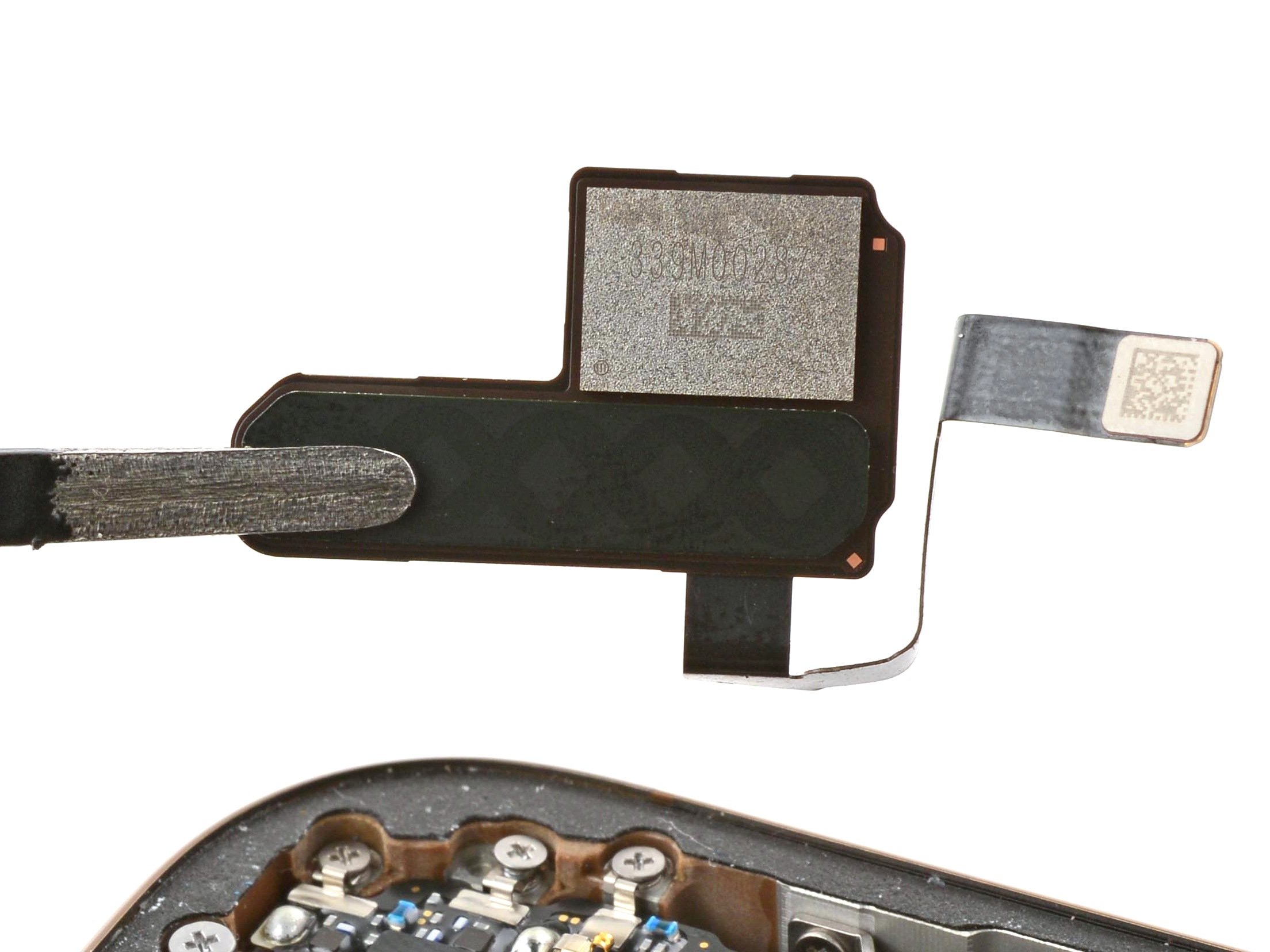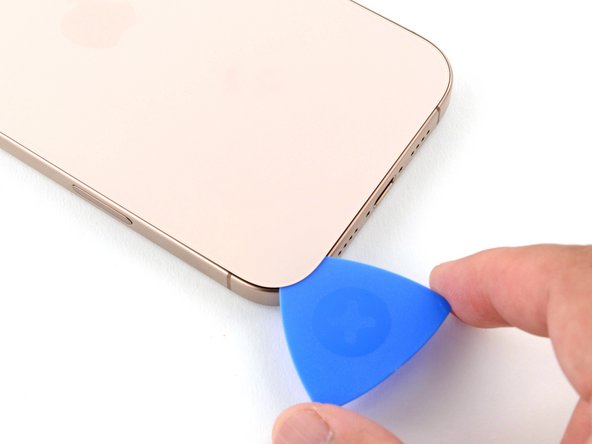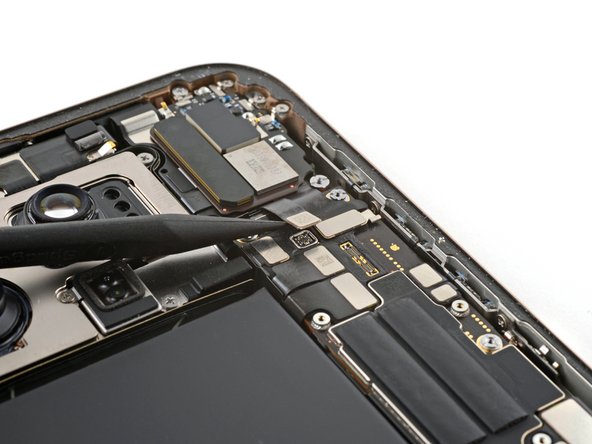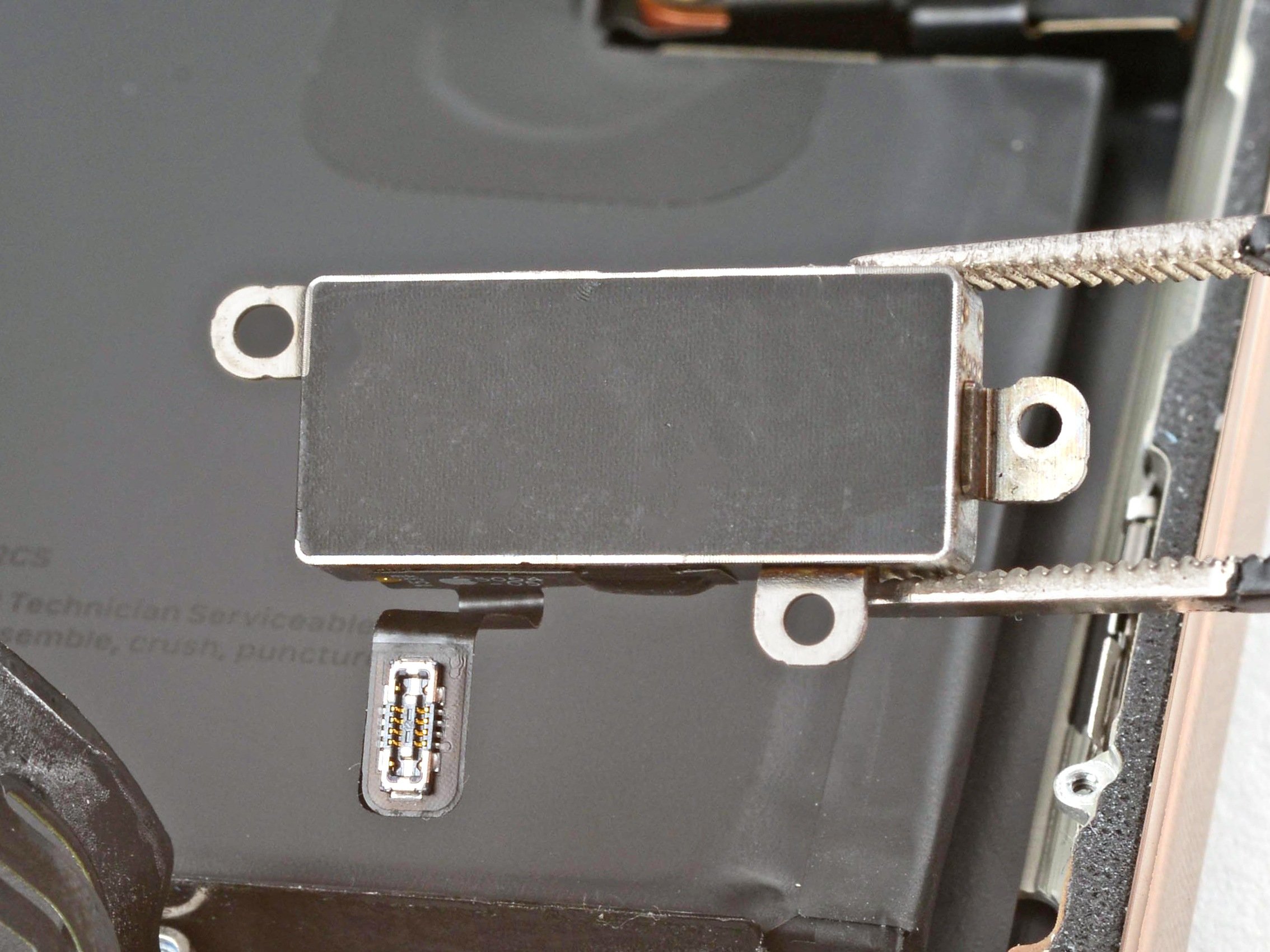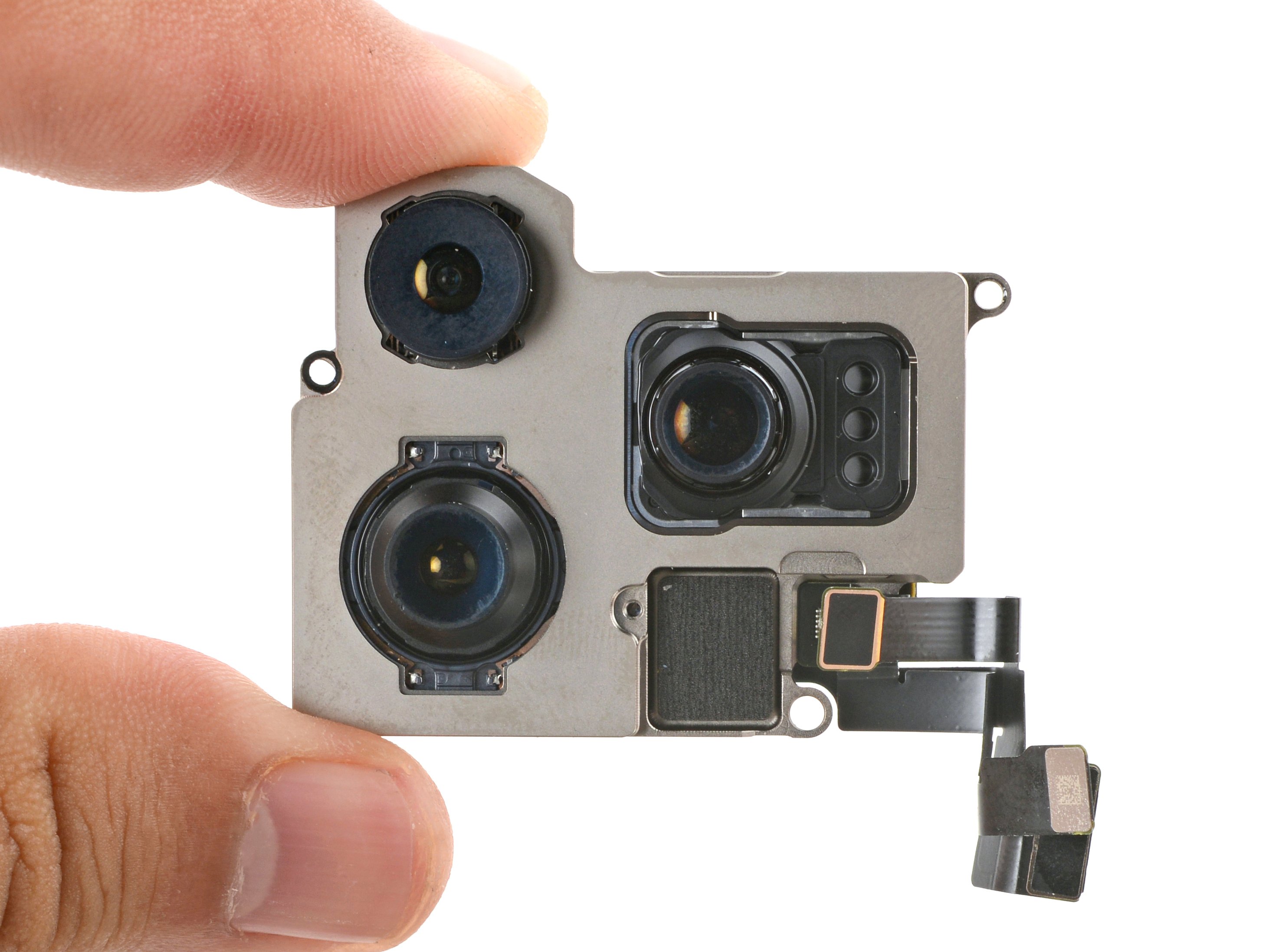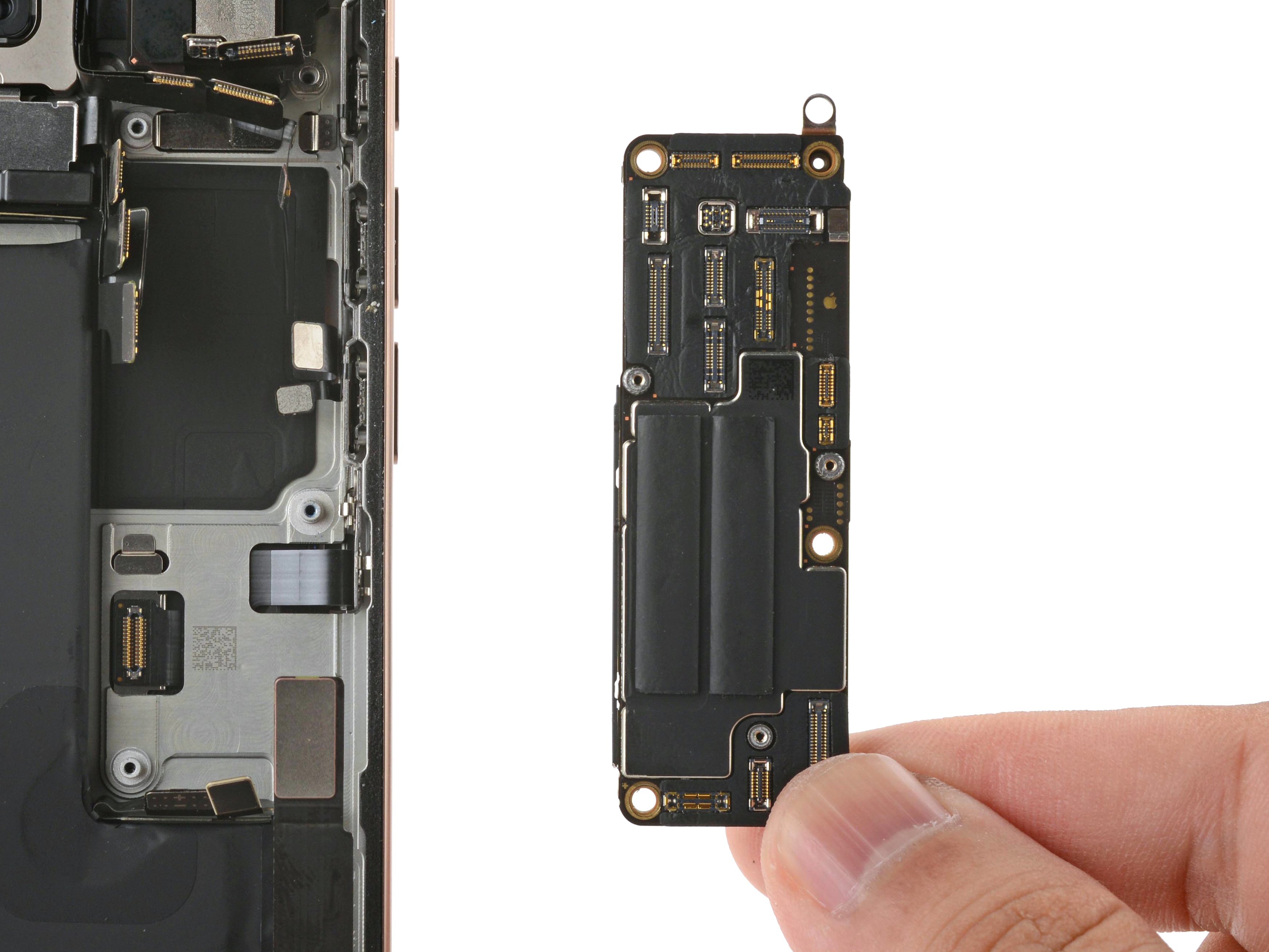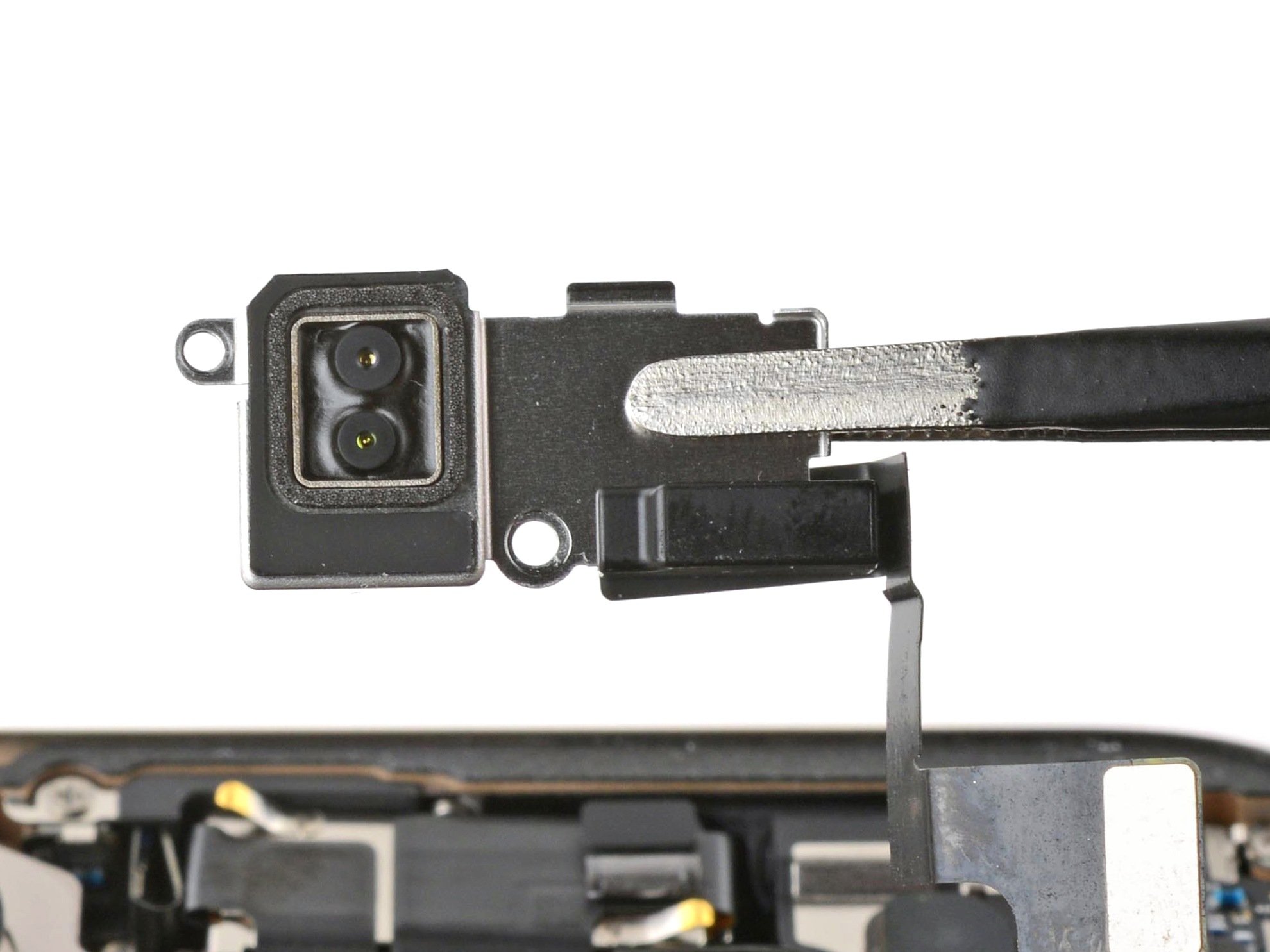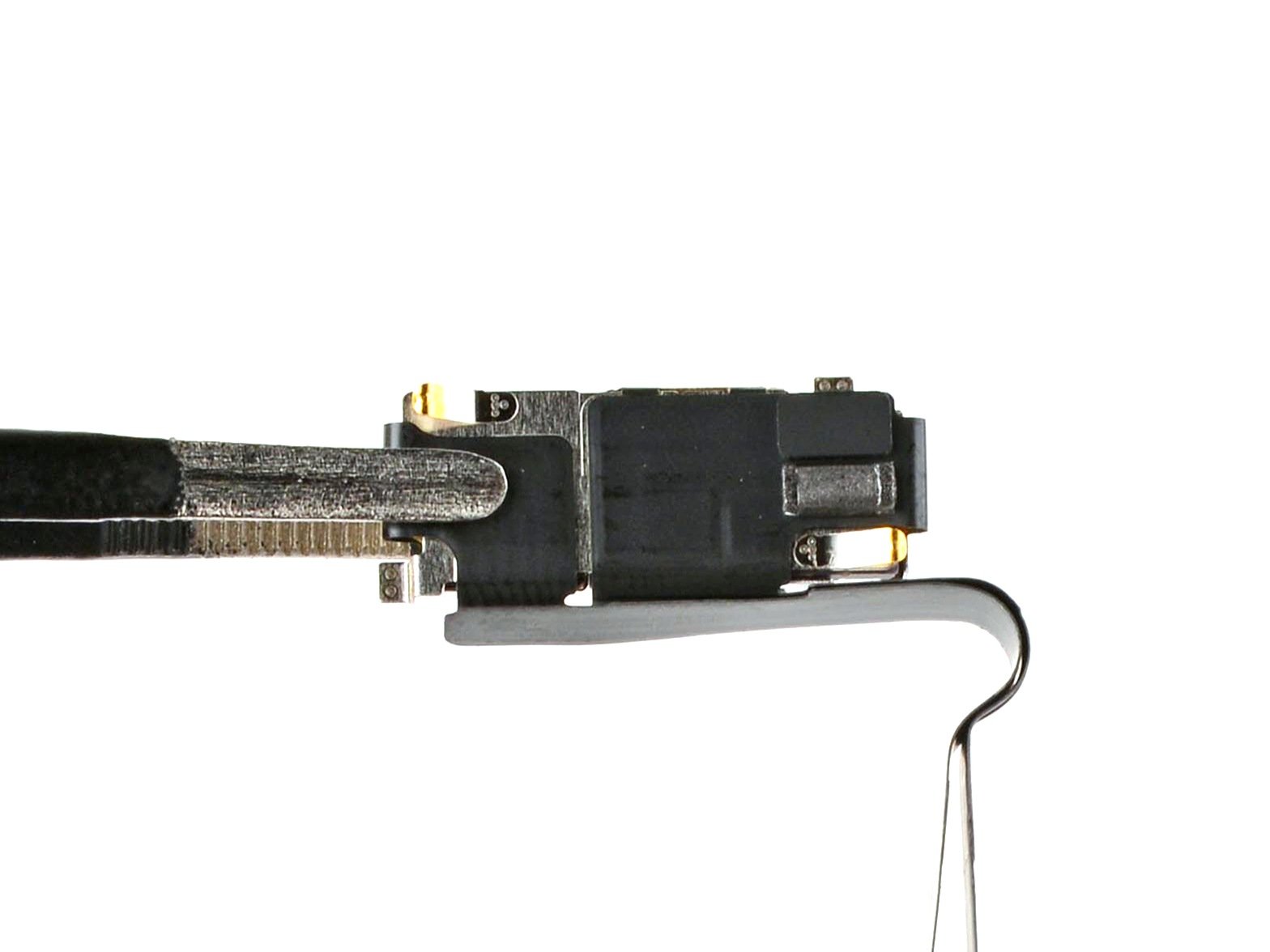iPhone 16 Pro Max 5G mmWave Antenna Replacement
Duration: 45 minutes
Steps: 53 Steps
Ready to swap out the 5G mmWave antenna on your iPhone 16 Pro Max? This guide walks you through removing and replacing that little component that keeps your phone chatting on the cellular network, especially if you're still rocking Wi-Fi but struggling with mobile connectivity. To get this done right, you'll want some replacement back glass and antenna adhesive (or double-sided tape like Tesa tape) on hand. Some pictures might show slight quirks, but nothing that messes with the overall steps. Let’s get your phone back to full signal strength!
Step 1
Let your iPhone's battery dip below 25%—a fully charged lithium-ion battery can be a bit of a troublemaker!
- First things first, let's give those cables a break! Unplug any cords connected to your iPhone.
- Now, it's time to power down. Hold down the power button along with either of the volume buttons and then slide to turn off your iPhone. Easy peasy!
Step 2
Pick a smooth spot near the bottom edge—big enough for your suction cup to hang out and do its thing.
- Got a seriously shattered screen or back glass? Layer some packing tape over the mess—let it overlap to keep the shards in check and save your fingers from surprise pokes. Makes the whole take-apart job way less stabby.
Tools Used
Step 3
- Grab your P2 pentalobe driver and carefully remove the two 7.4 mm screws on each side of the charge port. Easy does it—you're just loosening things up to move forward. If you need help along the way, you can always schedule a repair.
Step 4
Be careful not to push the opening pick in too far – you don’t want to risk damaging your device. Mark your pick to keep things safe.
Feel free to mark the other corners of the pick with different measurements if that helps.
Another option: tape a coin about 3 mm from the tip of the pick for extra precision.
- Grab your trusty opening pick and measure out 3 mm from the tip. A permanent marker will be your best buddy here—mark that spot like a pro!
Tools Used
Step 5
Ready to make some magic happen? The next couple of steps will help you crack open an initial gap using a suction handle. It’s like opening a stubborn pickle jar, but with more tech and less brine.
Want an easier time? Warm up the back glass with an iOpener—think of it as a spa day for your device. Just follow the instructions to heat and apply the iOpener for that perfect touch.
- Grab your hair dryer or heat gun and warm up the bottom edge of the back glass until it feels nice and toasty.
Tools Used
Step 6
If you don't see a gap, give the edge a little more heat and try again. Sometimes a gentle touch and a bit of patience are all it takes to get things moving.
- Stick the suction handle onto the lower edge of the back glass—right where the action happens.
- Give the handle a good, steady pull. You’re aiming for a little gap between the back glass and the frame—think of it like opening a stubborn jar, but cooler.
- Slide the tip of your opening pick into the gap you just made. Now you’re in business!
Tools Used
Step 7
As you carefully slice through the adhesive holding the back glass, keep your pick no deeper than 3 mm to avoid any unwanted damage to the parts underneath.
- Be careful with this fragile cable that links the back glass to the iPhone, located right by the volume up button. It's best to keep your pick away from here to prevent slicing through the cable.
- Look out for those little spring contacts all around the edges of the iPhone.
Step 8
If slicing through the adhesive feels stubborn, give the edge a quick reheat for about a minute, then try again. Sometimes a little warmth makes all the difference.
- Gently glide that opening pick along the bottom edge to cut through the adhesive like a pro.
- Keep the opening pick snugly in the bottom-left corner to make sure the adhesive doesn’t stick back together.
Step 9
- Grab a hair dryer or heat gun, and focus on heating up the left edge of the back glass. You want it to feel nice and warm to the touch, just be careful not to overdo it!
Tools Used
Step 10
Keep your pick shallow—no deeper than 3 mm—to keep those spring contacts safe and sound.
As you move along, you'll feel and hear the satisfying snap of the metal clips letting go.
- Pop in a second pick at the bottom-left corner, just next to the one already in place.
- Gently slide your pick along the left side to loosen the adhesive and pop open those metal clips.
- Keep that pick in the top-left corner to stop the adhesive from sealing back up as you work.
Step 11
- Grab your hair dryer or heat gun and warm up the top edge and top-right corner of the back glass until it’s nice and toasty—just hot enough to make the adhesive loosen up.
Tools Used
Step 12
Be careful not to push your pick in too far, or you might damage those tiny spring contacts. Keep it under 3 mm to be safe.
- Pop a third opening pick into the top-left corner like a boss.
- Carefully slide that pick along the top edge and curve it around the top-right corner, stopping just above the volume up button.
- Keep this pick in place to make sure the adhesive doesn’t sneakily reseal on you.
Step 13
- Grab a hair dryer or heat gun and gently warm up the right edge of the back glass until it feels comfortably hot to the touch. This helps loosen things up and makes the next steps smoother. If you need a hand along the way, you can always schedule a repair.
Tools Used
Step 14
Keep your pick gentle—no deeper than 3 mm—to avoid spring contact damage. Take it slow and steady, and if you need a hand, you can always schedule a repair.
- Pop a fourth opening pick into the bottom-right corner like a pro.
- Gently slide that pick around the corner and cruise up the right edge, stopping just below the volume down button.
- Keep this pick in place to make sure the adhesive doesn’t sneak back together.
Step 15
By now, the back glass should pop right off the frame. If it’s being stubborn and won’t budge, take your pick and run it carefully around the edges again to hunt down any sneaky adhesive spots or clips still holding on tight.
- Gently swing the back glass to the right like you’re opening a secret door, loosening up that last bit of sticky adhesive.
- Grab a clean, sturdy object to prop up the back glass—think of it as giving your iPhone a helping hand.
Step 16
- Grab your tri-point Y000 driver and carefully take out the three screws holding down the battery connector cover:
- Two screws measuring 1.3 mm each
- One screw measuring 1.0 mm
Step 17
- Gently lift off the cover that protects the battery connector and set it aside.
Step 18
- Grab your trusty spudger and carefully use its point to gently pry up and disconnect that battery press connector. Take it slow and steady—no rush here!
Tools Used
Step 19
- Grab your trusty tri-point Y000 driver and get ready to tackle those four screws holding the back glass connector cover in place:
- You'll need two screws that measure 1.3 mm in length
- And don't forget about the two that are 1.0 mm long
Step 20
- Gently lift the back glass connector cover straight up—think of it as peeling off a sticker—and then remove it. Easy does it, and if you want a hand, you can always schedule a repair.
Step 21
- Gently use the pointy end of your spudger to lift and unplug the back glass connector—easy does it!
Tools Used
Step 22
- Take off the back glass like a pro! It's time to reveal the inner workings of your device.
Step 23
- Grab your trusty spudger and gently poke at the 5G mmWave antenna connector to pop it up and disconnect it. You're doing great!
Tools Used
Step 24
The 5G mmWave antenna is hanging out thanks to a tiny piece of stretch-release adhesive—like it's holding on with a stretchy little hug.
- Grab your tweezers and gently lift up that antenna’s black adhesive pull tab—easy does it, no need to rush!
Tools Used
Step 25
- Grab those tweezers and give that adhesive pull tab a solid hold. Now, gently pull it at a low angle—you're doing great!
If the adhesive snaps, grab the broken end with some tweezers and gently tug to free it. Can't get the whole strip out at once? No worries—just put a drop of high-concentration (>90%) isopropyl alcohol under the antenna and move on to the next step. Keep it cool, and you'll have that part free in no time. Need a hand? Remember, you can always schedule a repair.
Tools Used
Step 26
- Gently wedge the tip of a spudger underneath the 5G mmWave antenna and carefully lift it away. Take your time—patience makes for smoother sailing. If you need help, you can always schedule a repair.
Tools Used
Step 27
Great job finishing up the disassembly! Now, let's walk through the reassembly steps to bring your device back together. Keep in mind, some photos might look a little different depending on your specific iPhone model, but don't worry—the process remains the same. If you hit any snags or need a hand, you can always schedule a repair with Salvation Repair for expert help.
Step 28
- Grab those tweezers or a spudger and gently scrape away any sticky adhesive leftover from the top of the earpiece speaker and the back of the antenna. Clean slate, here we go!
- If your new part doesn’t come with fresh adhesive, a small strip of double-sided tape will do the trick to keep that antenna snug on the earpiece speaker.
Step 29
- Place the mmWave antenna on top of the earpiece speaker, lining up the connector so it’s ready to snap into its logic board socket.
- Gently press the antenna down—like you mean it, but not too much—to secure it to the earpiece speaker.
Step 30
When snapping connectors back in, line up one side carefully and press down until you hear that satisfying click, then do the same on the other side. Avoid pressing right in the middle—misalignment here can bend the pins and cause some serious, permanent damage.
- Gently press the antenna connector back onto the logic board using your finger or a spudger. Keep it steady and make sure it clicks into place. If you need a hand, you can always schedule a repair.
Tools Used
Step 31
Handle those delicate grounding clips with care during cleaning. If one gets bent out of shape, just gently bend it back with your fingers or some tweezers—no force needed.
- Grab some blunt nose tweezers or just use your fingers to pick off those chunky bits of adhesive around the frame. It’s like picking stickers off your notebook—oddly satisfying.
- With a spudger in hand, scrape away the leftover sticky stuff. Don’t be shy; that frame can take it.
- If the adhesive is being stubborn, hit it with a hair dryer or heat gun for a quick warm-up, then try again. Heat makes everything easier—except ice cream.
Tools Used
Step 32
- If you're reusing your back glass, grab a microfiber or lint-free cloth and give it a few drops of highly-concentrated isopropyl alcohol (over 90%). Wipe around the edges to prep the surface and make sure the new adhesive sticks properly. Need a hand? You can always schedule a repair.
Step 33
Take it easy while cleaning the frame. A spotless surface helps the new adhesive stick better, giving you a stronger hold in the end.
- Take a lint-free cloth or coffee filter, wrap it around the tip of your spudger, and hit it with a couple drops of high-strength isopropyl alcohol (think 90% or higher).
- Glide around the edge of the frame in one smooth direction to wipe away any leftover adhesive gunk.
Tools Used
Step 34
Look for features like the camera cutout and those little notches at the top and bottom edges—these are your guides for laying down the adhesive just right in the frame.
- Place the adhesive sheet on top of the frame and check which way it fits best—think of it like matching puzzle pieces!
Step 35
This adhesive is super sticky! Keep it away from anything until you're ready to apply it to the frame.
Got multiple liners on your adhesive? No worries! Just peel off the one that reveals the sticky side that'll go right onto the frame.
- Take hold of the little tab in the corner of the adhesive sheet and gently peel back the liner to reveal a third of that sticky goodness.
Step 36
Once the adhesive is in place, there’s no going back! If you need to make any changes, you'll have to take it off and start fresh with new adhesive.
- Line up the sticky edge of the adhesive strip with the matching edge on your iPhone’s frame like a boss.
- Once it’s looking good, give that adhesive a gentle press to make it stick like it’s meant to be.
Step 37
- Keep peeling back that liner, pressing the adhesive down gently as you go. You're almost there—just take it slow and smooth it out like you're laying down a fresh sticker.
No worries if you're fresh out of adhesive strips—just put your iPhone back together and use it as is for now. Keep in mind, though, that water resistance won't be the same until you swap out the adhesive. If the adhesive lines up nicely, the edges will snap right into place like they were made for each other. If you notice a tiny misalignment, gently tug the long edges so they sit flush with the frame. And if the adhesive starts to crease or wrinkle, just peel it off and start fresh with new adhesive—better to get it right than to leave it crooked.
Step 38
Be gentle with those delicate grounding clips! If one gets a little bent out of shape, just coax it back into place using your fingers or some tweezers. You've got this!
Be gentle and avoid using too much force, which can stretch and deform the adhesive.
Step 39
You might notice some liner still hugging the edges right now. That's totally on purpose—it keeps the adhesive from grabbing onto things while you’re putting your iPhone back together. Hold off on peeling those little release liners for now!
- Time to get our hands a little dirty! Gently grab that spudger or use your fingers to lift the pull tab that's chillin' on the corner of the large front liner. It's like a little surprise waiting to be revealed!
- Now, give that pull tab a nice tug and peel off the large front liner from the stickiness underneath. It's as satisfying as unwrapping a gift!
Tools Used
Step 40
- Gently lift the back glass starting at the right edge of your iPhone, like you're revealing a secret.
Step 41
- Gently press the back glass connector onto the logic board using your finger or the flat end of a spudger—like clicking puzzle pieces together!
Tools Used
Step 42
Now's a prime time to give your repair a little test run before sealing up your iPhone! Go ahead and power it on to see if everything's working smoothly. Once you're satisfied, power it back down and let's get back to reassembling.
If your iPhone isn't lighting up, no worries! Just connect it to a power source and give it another go.
Have you swapped out the logic board and the screen is still playing hard to get? No problem! Just follow the screen guide to manually connect that display connector and get back on track.
- Gently press the battery connector onto the logic board using your finger or a spudger. A little click means you’re golden.
Tools Used
Step 43
- Get the back glass connector cover lined up with its screw holes and gently place it where it belongs. You've got this!
Step 44
- Grab your trusty tri-point Y000 driver and let's get those screws in place to secure the back glass connector cover. You'll need to use two screws that are 1.3 mm long and two that are 1.0 mm long. Let's make this phone as good as new!
Step 45
- Get that battery connector cover ready by lining it up with the screw holes and gently setting it down in place. You've got this!
Step 46
- Grab your tri-point Y000 driver and pop in the three screws holding down the battery connector cover:
- Two screws, each 1.3 mm long
- One screw, 1.0 mm long
Step 47
As you peel off those liners, keep an eye out — nothing should brush up against that sticky adhesive. Treat it gently to avoid messing with the glue and to keep everything in tip-top shape.
- Gently use your fingers or a spudger to lift and peel away all the liners around the edges, revealing the sticky adhesive underneath.
- Give the frame and back glass a good once-over to spot any leftover liner bits and remove them all. There shouldn’t be any liners hanging around.
Tools Used
Step 48
If you hit a snag, it might be a stubborn perimeter clip that got a bit crooked and is now stuck under the frame. Check where it’s holding up, then carefully nudge any bent clips back into place.
- Gently lower the back glass onto the frame, starting with the top edge to get it seated properly.
- Press around the edges of the iPhone until the back glass is snug and flush against the frame. If you need help, you can always schedule a repair.
Step 49
Heating things up softens the glue and helps it stick better. It’s like giving your adhesive a warm hug to make sure it stays put.
- Grab a hair dryer, heat gun, or an iOpener and give the back glass perimeter a gentle warm-up until it’s just a bit too hot to touch. This will help loosen things up for the next steps.
Tools Used
Step 50
- Give that iPhone a gentle but firm squeeze all around its edges, like you're giving it a friendly hug!
Step 51
If you've got some vise clamps handy, pop them around the edges of your device to help the new adhesive set up nice and snug.
- Flip your iPhone over so the screen is resting on a clean, smooth surface. We've got this!
- Wrap a strip of tape all around the edges of the back glass to keep it looking sharp and protected.
- Gather some coins and stack them around the edge of the back glass until you have a little wall that stands as tall as the rear camera bumps. You're doing great!
Tools Used
Step 52
Watch out! Those coins might leave a little mark on your book cover, so it's best to avoid using anything too precious.
Applying pressure helps get that adhesive working its magic.
- Put your iPhone under some pressure - literally. Stack 3-4 heavy books on top and get ready to wait.
- Now, just hang in there for about 30 minutes and let the books do their thing.
Tools Used
Step 53
- Don’t let that old tech just sit there! Make sure to drop it off at an R2 or e-Stewards certified recycler.
- Things didn’t go quite as you hoped? No worries! Try some quick troubleshooting, or pop into our Answers community for some friendly advice.
